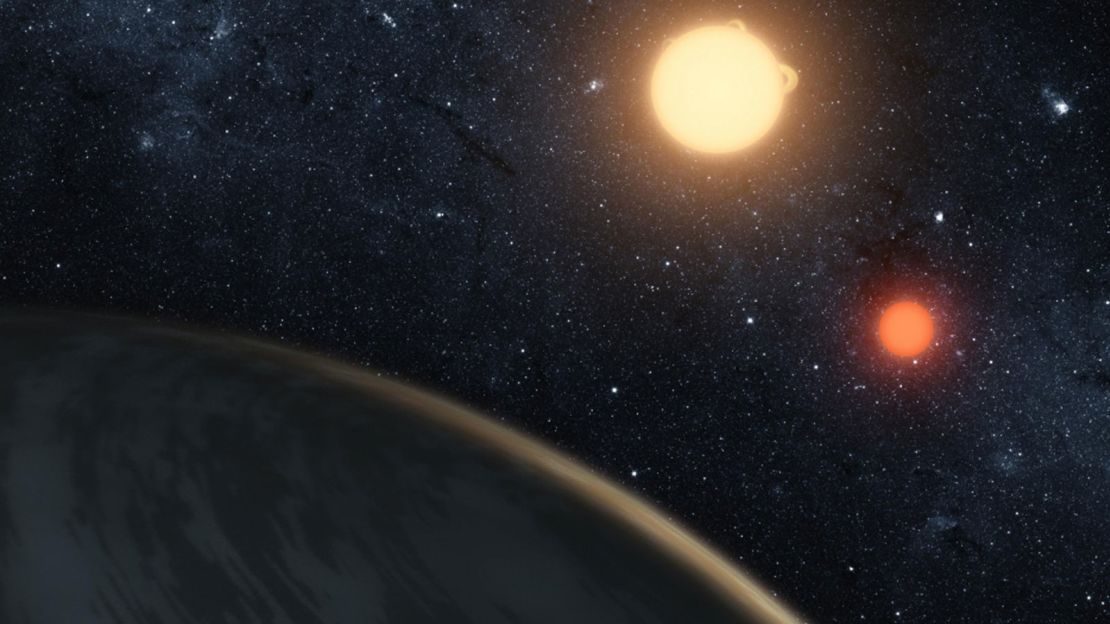Story highlights
NASA's Jet Propulsion Laboratory has produced vintage-style posters advertising trips to new planets
Posters evoke golden age of travel from last century with classic art deco graphics and fonts
Actual travel to newly discovered planets is unlikely for now as they're trillions of miles away
When packing for a vacation on Kepler 16-b, it’s good to remember the sunscreen.
It does, after all, have two suns.
OK, so a long weekend visiting a planet 1,200 trillion miles away, may not be a realistic prospect just yet, but that hasn’t stopped scientists at NASA from dreaming.
To mark the exciting discovery of a slew of potentially distant habitable worlds by its Kepler space observatory, the U.S. space agency’s Jet Propulsion Laboratory at the California Institute of Technology has created a series of posters advertising imaginary vacations to some of them.
Rendered in the retro style of classic travel billboards of the 1920s, ’30s and ‘40s, the posters depict these distant worlds as pleasurable destinations.
The image for Kepler 16-b – previously compared to the fictional “Star Wars” planet of Tatooine because of its dual suns – shows a space-suited figure basking in the light from the twin orbs overhead.
“Relax on Kepler 16-b,” the poster says. “The land of two suns … Where your shadow always has company.”
Although the planet is depicted as a rocky, terrestrial world, NASA says it could also be a gas giant like Saturn with freezing temperatures that would make it hostile to known lifeforms.
A second poster shows an astronaut free-falling to experience the powerful gravity over HD 40307g, a “Super Earth” 44 light years – or 264 trillion miles – away.

The third depicts Kepler-186f (even further away at 500 light years) with a scene of red trees held back by a white picket fence.
The planet has been previously described as “Earth’s cousin” because it’s similar in size to our own world. Because it orbits a cooler, redder sun there’s speculation that if plants did grow here, they’d be a different color to our own vegetation.
Otherworldly travel destinations here on Earth
Where the grass is redder
“Kepler-186f, where the grass is always redder on the other side,” the poster’s slogan reads.
The posters, available to download for free via JPL’s website, are the work of the space agency’s visual strategists Joby Harris, David Delgado and Dan Goods, who were inspired by the new discoveries being made by Kepler.
“I was thinking … we may be not alone,” Delgado tells CNN. “We’re entering a new part of our humanity and one of the natural things that came to mind is what would it be like to visit them … and wouldn’t it be fun to make vacation posters.
“It felt like a natural fit.”
Harris, the lead artist, was inspired by the enduring appeal of vintage art deco-style posters.
“I remember sitting in meetings with the scientists thinking ‘oh my goodness, science fiction is now becoming science non-fiction’,” he says.
“People gravitate toward those old posters. They hang them on their walls even today and you want to go there. They’re a celebration of place.
“So we thought we’d produce some of our own and come up with funny tag lines that would get people dreaming about what it would be like to go there.”
The three posters were released just as NASA announced Kepler’s latest discoveries, bringing its planetary tally to more than 1,000 alien worlds since its launch in 2009.
According to Delgado, three more posters are in the works, but progress is slow because the theories about what these newly found planets look like can change from day to day.
Still, as he points out, the NASA team might not be the only artists at work.
“Maybe on one of these other planets, they’re making posters about visiting here.”




